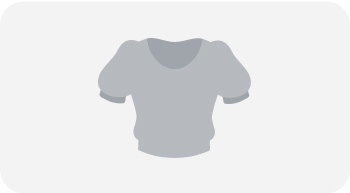In the world of furoshiki, the traditional Japanese wrapping cloth, size is everything. One unique way to measure furoshiki is with the term “haba” (巾), which means “width.” Historically, this term was used instead of modern units like centimeters or inches. A single haba is about 35 cm (13.8 inches), so a “two-haba” (niju-haba) furoshiki would be roughly 70 cm square.
This traditional way of measuring cloth dates back to a time when fabric was handwoven in standard widths. It reflects the Japanese approach to craftsmanship—practical, consistent, and respectful of materials.
Furoshiki and Kimono Fabric

Furoshiki are deeply connected to kimono culture. Both furoshiki and kimono were made from fabric woven in standardized widths. The typical bolt of kimono fabric, called tanmono (反物), is also around 35–38 cm wide—the same as one haba. Leftover fabric from kimono making was often repurposed into furoshiki, making the most of every piece of cloth.
This connection highlights the traditional Japanese values of resourcefulness, sustainability, and aesthetic harmony. Even today, understanding these roots adds richness to how we use and appreciate furoshiki.
Common Furoshiki Sizes and Their Uses

Here are the most typical furoshiki sizes and examples of what you can wrap with each:
45–50 cm (19.7–21.7 in)
- Best for: Wrapping small gifts, books, or a bento box.
- Tip: This size is especially popular for seasonal gift wrapping or souvenirs.
- Also used as: A Pocket Squares, handkerchief, napkin, placemat, or even a compact wrapping for accessories.
68-70 cm (27.6 in)
- Best for: Medium-sized items like a pair of shoes, clothing, a laptop or wine bottles.
- Why it's popular: This is a very versatile size, often used in daily life in Japan.
- Also works well as: A small tote bag when tied properly.
90–110 cm (40.9–43.3 in)
- Best for: Bulky items, boxes, cushions or as a stylish reusable shopping bag.
- Tip: Great for eco-conscious grocery shopping or carrying clothes when traveling.
- Also used as: A fashion accessory—many people wear them as scarves or shawls.
How to Choose the Right Size
Here are a few things to consider:
- Item size: Choose a furoshiki that is 2.5 to 3 times larger than the item you want to wrap.
- Functionality: If you're using it as a bag, opt for a size over 70 cm.
- Style: Larger sizes offer more fabric to show off beautiful patterns when tied.



















![100% Organic Cotton Art Furoshiki 68x68cm [Choju giga (Japanese Old Manga Paint) ]](https://cdn.shopify.com/s/files/1/0541/0727/5463/products/100-organic-cotton-art-furoshiki-68x68cm-choju-giga-japanese-old-manga-paint-216100.webp?v=1731124089&width=600)

![Traditional Furoshiki [ Pine Bamboo Plum ] 70 x 70cm](https://cdn.shopify.com/s/files/1/0541/0727/5463/products/traditional-furoshiki-pine-bamboo-plum-70-x-70cm-219358.jpg?v=1731123370&width=600)


![Traditional Furoshiki [ Leaf and Tortoiseshell ] 70 x 70cm](https://cdn.shopify.com/s/files/1/0541/0727/5463/products/traditional-furoshiki-leaf-and-tortoiseshell-70-x-70cm-155094.webp?v=1731123840&width=600)

![Traditional Furoshiki [ Plovers and Waves ] 70 x 70cm](https://cdn.shopify.com/s/files/1/0541/0727/5463/products/traditional-furoshiki-plovers-and-waves-70-x-70cm-921558.webp?v=1731123825&width=600)




![Traditional Furoshiki [ Seven Treasures ] 70 x 70cm](https://cdn.shopify.com/s/files/1/0541/0727/5463/products/traditional-furoshiki-seven-treasures-70-x-70cm-946079.webp?v=1731123833&width=600)






















